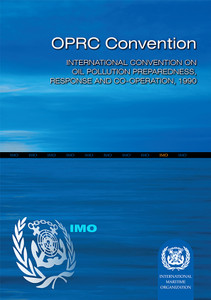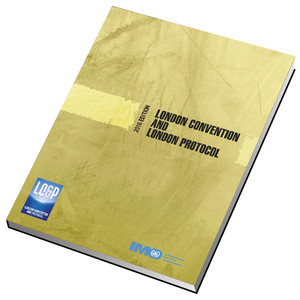
This Guide aims to provide an in depth understanding of the effective implementation of the International Convention on Oil Pollution Preparedness, Response and Cooperation, 1990 (OPRC Convention) and its Protocol on Preparedness, Response and Cooperation to Pollution Incidents by Hazardous and Noxious Substances, 2000 (OPRC-HNS Protocol). It covers the planning, preparedness and implementation process at national and regional levels, and identifies existing publications and available support mechanisms to assist.
This publication offers comprehensive guidance on pollution response, embedding all advice in relevant IMO legislation. It explores OPRC training and exercises, pollution from sources other than ships, and the contingency plans to be put in place to mitigate pollution incidents from hazardous substances.
This Guide aims to provide an in depth understanding regarding effective implementation of the International Convention on Oil Pollution Preparedness, Response and Cooperation, 1990 (OPRC Convention) and its Protocol on Preparedness, Response and Cooperation to Pollution Incidents by Hazardous and Noxious Substances, 2000 (OPRC-HNS Protocol). It provides a stepwise approach to the planning, preparedness and implementation process at national and regional levels, and identifies existing publications and support mechanisms that are available to assist.
Chapter 1 Introduction
1.1 Background and context
1.2 Benefits of the OPRC Convention and the OPRC-HNS Protocol
1.3 Overall approach and checklists
1.4 Case study
Chapter 2 Establish the legislative basis
2.1 Amending existing laws or Codes
2.2 Regulating pollution preparedness and response
2.3 Applicability to all oil and HNS pollution risks
2.4 Funding pollution preparedness and response
2.5 Challenges of HNS preparedness and response
2.6 Links to other instruments
2.7 Summary
Chapter 3 Coordinate within government
3.1 Marine pollution preparedness and response as a multidisciplinary issue
3.2 National pollution preparedness and response forum
3.3 Engagement with private sector
3.4 Summary
Chapter 4 Clarify roles and responsibilities
4.1 Responsibilities for preparedness
4.2 Responsibilities for operational response
4.3 On water and shoreline preparedness and response
4.4 Incident Management Systems (IMS)
4.5 Summary
Chapter 5 Develop capacity
5.1 Scoping project proposals
5.2
Sources
of
guidance
and
support
5.3
Summary
Chapter 6 Review and assess status of national preparedness
6.1 Assessment
6.2 Competency for reviews and evaluation
6.3 Summary
Chapter 7 Develop national preparedness
7.1 National contingency plan
7.2 Core concepts in planning
7.3 Shipboard, port and HNS or oil-handling facility plans
7.4 Equipment stockpiles
7.5 Summary
Chapter 8 Regional and international cooperation
8.1 Regional cooperation
8.2 The operational imperative
8.3 Sub-regional cooperation
8.4 International offers of assistance
8.5 Summary
Chapter 9 Implement training and exercising
9.1 OPRC Model Courses
9.2 OPRC-HNS Model Courses
9.3 Exercises
9.4 Summary
Chapter 10 Sustain preparedness
Chapter 11 Liability and compensation
11.1 IMO instruments
11.2 Pollution from sources other than ships
A??s a specialized agency of the United Nations, IMO is the global standard-setting authority for the safety, security and environmental performance of international shipping. Its main role is to create a regulatory framework for the shipping industry that is fair and effective, universally adopted and universally implemented.
In other words, its role is to create a level playing field so that ship operators cannot address their financial issues by simply cutting corners and compromising on safety, security and environmental performance. This approach also encourages innovation and efficiency.
Shipping is a truly international industry, and it can only operate effectively if the regulations and standards are themselves agreed, adopted and implemented on an international basis. IMO is the forum at which this process takes place.
- Number of Pages:
- 83
- ISBN:
- 9789280117240
- Published Date:
- June 2020
- Book Height:
- 250 mm
- Book Width:
- 210 mm
- Author:
International Maritime Organization
- Preview:
- Yes






